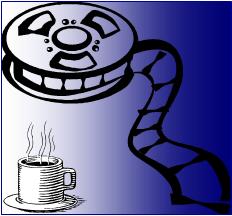

|
 |
 |
Imitation of Life (1934)
|
Please go to the new Coffee Coaster site implemented more gracefully in Wordpress. This page: http://brianrwright.com/CoffeeCoasterBlog/?p=3318 |
Claudette Colbert ... Beatrice 'Bea' Pullman
Warren William ... Stephen 'Steve' Archer
Rochelle Hudson ... Jessie Pullman, Age 18
Ned Sparks ... Elmer Smith
Louise Beavers ... Delilah Johnson
Fredi Washington ... Peola Johnson, Age 19
Delilah Johnson: What's my baby want?
Peola Johnson: I want to be white, like I look.
Delilah Johnson: Peola!
Peola Johnson: [gesturing to mirror] Look at me. Am I not white? Isn't that a white girl?
Could not resist following up from the review of the 1959 melodrama of the same name last week. The late 50s version is probably better known and is definitely the more melodramatic of the two movies. Why?
First of all, the 1934 version was presumably closer to the book written by Fannie Hurst: Bea Pullman and her daughter Jessie struggle to survive in 1930s Depression-era New Jersey, then Bea encounters Delilah Johnson. Delilah is a black woman who seeks work as a domestic servant in return for room and board for her daughter, Peola, and herself. A deep friendship materializes between the two women, and Bea parlays Delilah's 'secret' pancake recipe into, first, a Boardwalk business, then, an Aunt Jemima-like box-mix rags-to-riches success story.
In the 1959 Imitation, Bea is named Lora and Lora is a performer looking to make it big in the Big Apple. So right away the 1959 version loses the commercial connection between the two women—Bea and Delilah—and with that disconnect enter (in 1959 Imitation) several more 'drama' elements: Steve Archer is originally a struggling artist, then a male chauvinist, finally a successful company man and semi-liberated; Lora encounters an instance of the casting couch, that guy later becomes her trusted agent, and she becomes a globetrotting actress... hence the 'neglect daughter' routine.
So IMHO[1] the reason 1959 Imitation becomes the huge melodrama it does is because it throws about three or four more drama angles at the viewer. To see what sticks? That's conceivable, but the effect for me is having too many angles to keep track of, and I lose interest, don't feel the deep emotions one is supposed to feel for a Melodrama with a capital M. It explains why for the 1959 version, here's what I wrote in that review:
So much drama crammed into all the characters, so little time. I asked a friend tonight whether he'd seen Imitation of Life, and he said sure, his wife couldn't watch it without a box of tissues. Funny, as emotional as the plot moves along, especially toward the end, the extremity of the conditions—the extreme melodrama if you will—made the movie a bit unreal to me. I'm tempted to even call the acting overdone, but that was the style. Still this is a strong movie that does give one much to consider and makes a splendid big deal out of the essential things.
Okay, back to Imitation 1934 or actually to both of the films: they share the common denominator of the two other central threads—besides the friendship of the two women and the context of eventual wealth—which are a) the black woman's daughter looking white and being ashamed to be associated with her black mother, and b) the white woman's daughter growing up to find she has a crush on her mother's Mr. Steve. Imitation 1934 does a much better job prioritizing the dramatic elements and moving smoothly to a resolution. Undeniably, the black-looking-white causing breach of mother love theme is paramount, and it is the one that creates the true emotional impact. Because it is better integrated, the 1934 film tugs far more powerfully on the heartstrings.
I had mentioned in the 1959 review that dealing with such racial concerns in the 1950s was ahead of its time. Well, I should have watched the 1934 film first, because 25 years earlier, Hollywood was on top of it. At least this movie was leading edge. It's interesting to note that the Delilah character and blacks in general were practically as stereotyped and diminished by the dominant society in the 1950s as they were in the 1930s. Yet somehow the relationship between Bea and Delilah seems far less unusual to me than the relationship between Lora and Annie Johnson.
All in all, the acting in Imitation 1934 rolls along more naturally, too. Colbert is very smooth, the everyman's dream girl of her time. This was the year she also performed in the Academy Award winning movie, It Happened One Night, with costar Clark Gable—not only did that movie win the Oscar, so did she, so did Gable, and so did director Frank Capra! And Louise Beavers is sympathetically powerful as Delilah. But what I want to point out are the performances of Warren William as Steve Archer and Rochelle Hudson playing Bea's daughter Jessie.
William is ideal, and not nearly so confusingly multi-motivated as the John Gavin version in Imitation 1959. And he has quite a filmography. But the reason his Archer is drawn so well has less to do with acting ability per se as it does the screenplay. If you go to the IMDb page, you'll find a large number of screenplay credits and perhaps that was the craze at the time. But whoever was responsible for the final product gets Steve right. He's simple, he's a professional man who travels around the world, he adores Bea completely, he's funny and witty and true blue.
These traits of Steve draw the 18-year-old Jessie to him while his fiancée Bea has to be away for two weeks. In the 1959 version, Sandra Dee plays the daughter, and she's a lightweight compared to the Rochelle Hudson characterization. For one thing, even through all the years, Hudson's voluptuous sensuality leaps off the screen... she was definitely an 'it' girl of her era. Now, Hudson as Jessie would tempt any man. But in this segment of the plot, Mr. Steve behaves admirably, doubly so because of Jessie's raw sex appeal.
To put it simply, the writing in Imitation 1934 makes sense. As a consequence of that, the director gets his priorities settled and knows how to direct your attention to the central dramas that truly matter. And I believe you'll wind up being more genuinely moved than from the latter film. Which I also am quite fond of—in a 1950s 'everything is so confusing' kind of world. As a child of the 1950s, I know how troubled were the times, the uneasiness and uncertainty among the platitudes of Pleasantville. In the 1930s cultural mores seem to have had more stability.
###
2011 December 07
Copyright © Brian Wright | The Coffee Coaster™
Imitation of Life (1934) | Claudette Colbert | Racism | Melodramas

| Publish Fee: $25 Donation |  |
|||
| |
|
Main | Columns | Movie Reviews | Book Reviews | Articles | Guest |